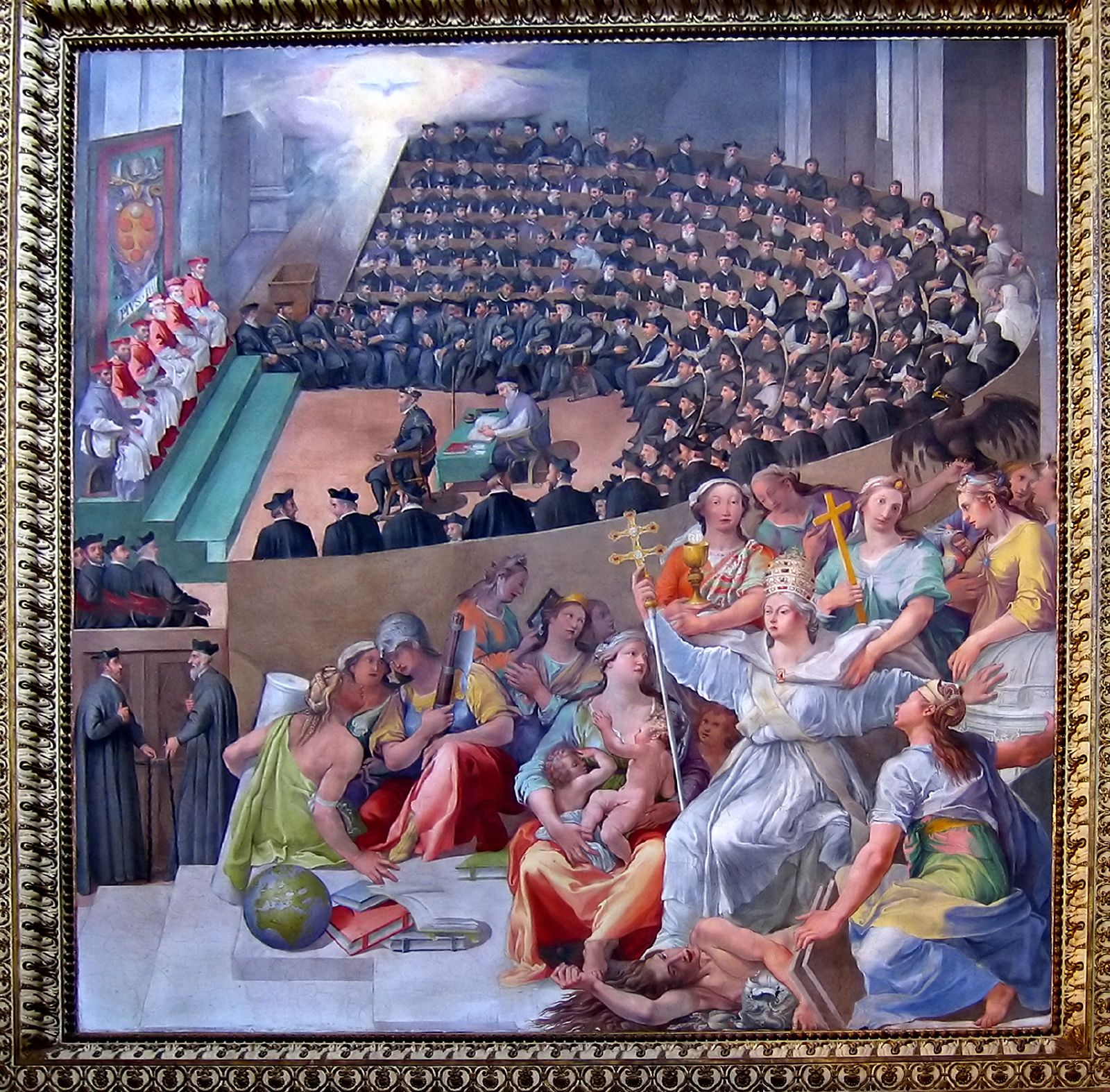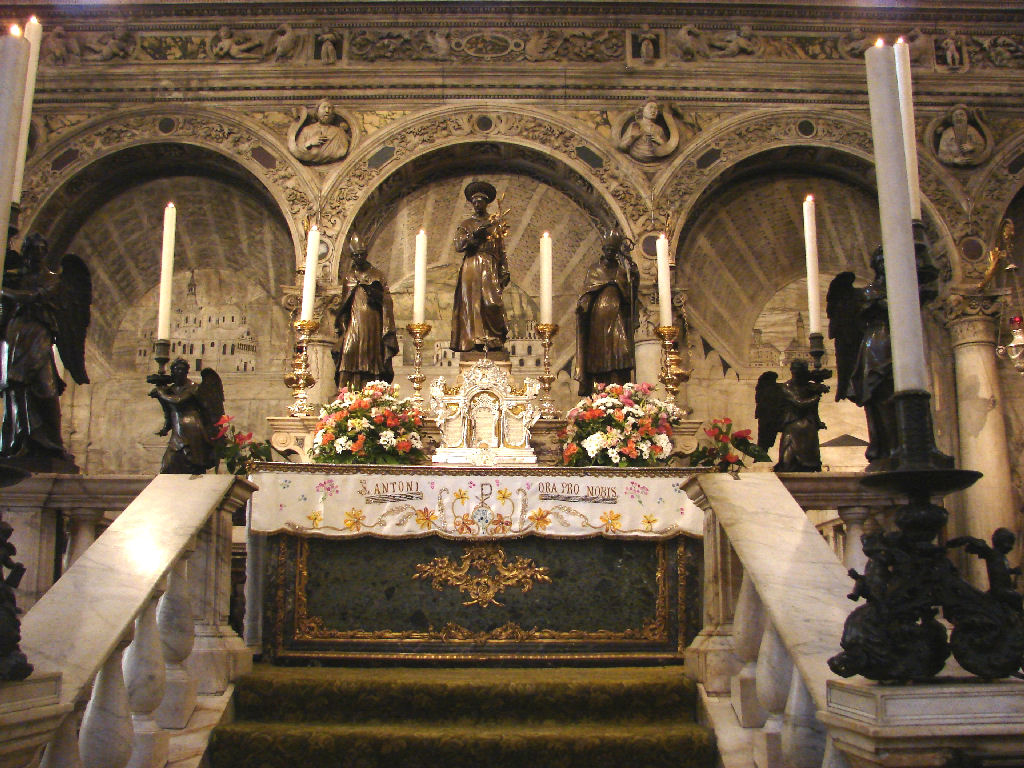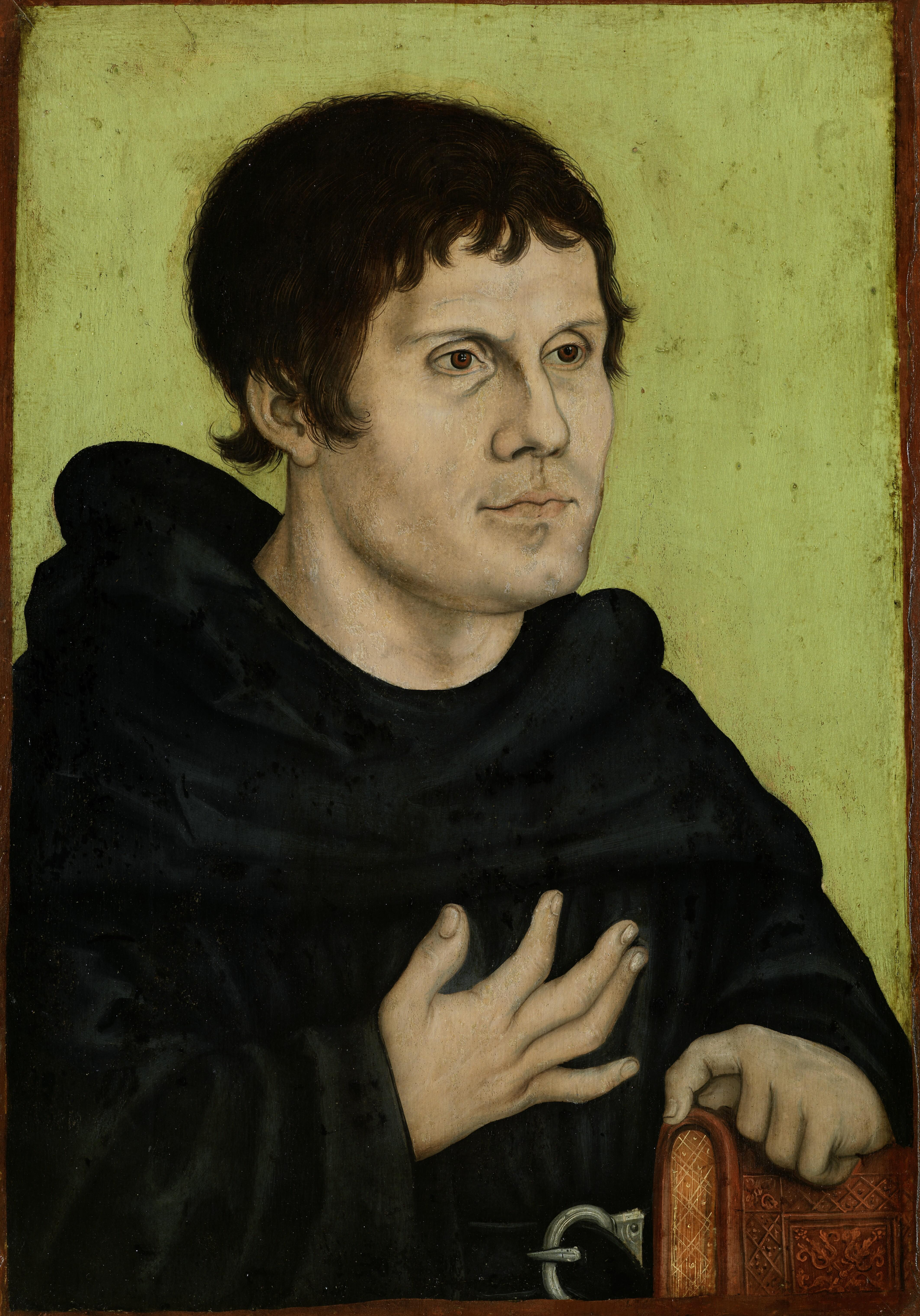|
Council Of Trent
The Council of Trent (), held between 1545 and 1563 in Trent (or Trento), now in northern Italy, was the 19th ecumenical council of the Catholic Church. Prompted by the Protestant Reformation at the time, it has been described as the "most impressive embodiment of the ideals of the Counter-Reformation.""Trent, Council of" in Cross, F. L. (ed.) ''The Oxford Dictionary of the Christian Church'', Oxford University Press, 2005 (). It was the last time an ecumenical council was organized outside the city of Rome. The Council issued key statements and clarifications of the Church's doctrine and teachings, including scripture, the biblical canon, sacred tradition, original sin, justification, salvation, the sacraments, the Mass, and the veneration of saintsWetterau, Bruce. ''World History''. New York: Henry Holt and Company, 1994. and also issued condemnations of what it defined to be heresies committed by proponents of Protestantism. The consequences of the council were als ... [...More Info...] [...Related Items...] OR: [Wikipedia] [Google] [Baidu] |
Veneration
Veneration (; ), or veneration of saints, is the act of honoring a saint, a person who has been identified as having a high degree of sanctity or holiness. Angels are shown similar veneration in many religions. Veneration of saints is practiced, formally or informally, by adherents of some branches of all major religions, including Christianity, Judaism,"Veneration of saints is a universal phenomenon. All monotheistic and polytheistic creeds contain something of its religious dimension... " Hinduism, Islam, Buddhism and Jainism. Within Christianity, veneration is practiced by groups such as the Catholic Church, Eastern Orthodox Church, and the Oriental Orthodox Church, all of which have varying types of canonization or glorification processes. In Catholicism and Orthodoxy, veneration is shown outwardly by respectfully kissing, bowing or making the sign of the cross before a saint's icon, relics, or statue, or by going on pilgrimage to sites associated with saints. The Lutheranis ... [...More Info...] [...Related Items...] OR: [Wikipedia] [Google] [Baidu] |
Catholic Church
The Catholic Church (), also known as the Roman Catholic Church, is the List of Christian denominations by number of members, largest Christian church, with 1.27 to 1.41 billion baptized Catholics Catholic Church by country, worldwide as of 2025. It is among the world's oldest and largest international institutions and has played a prominent role in the history and development of Western civilization.Gerald O'Collins, O'Collins, p. v (preface). The church consists of 24 Catholic particular churches and liturgical rites#Churches, ''sui iuris'' (autonomous) churches, including the Latin Church and 23 Eastern Catholic Churches, which comprise almost 3,500 dioceses and Eparchy, eparchies List of Catholic dioceses (structured view), around the world, each overseen by one or more Bishops in the Catholic Church, bishops. The pope, who is the bishop of Rome, is the Papal supremacy, chief pastor of the church. The core beliefs of Catholicism are found in the Nicene Creed. The ... [...More Info...] [...Related Items...] OR: [Wikipedia] [Google] [Baidu] |
Original Sin
Original sin () in Christian theology refers to the condition of sinfulness that all humans share, which is inherited from Adam and Eve due to the Fall of man, Fall, involving the loss of original righteousness and the distortion of the Image of God. The biblical basis for the belief is generally found in Fall of man#Genesis 3, Genesis 3 (the story of the expulsion of Adam and Eve from the Garden of Eden), and in texts such as ("I was brought forth in iniquity, and in sin did my mother conceive me") and ("Therefore, just as sin entered the world through one man, and death through sin, and in this way death came to all people, because all sinned"). The specific doctrine of original sin was developed in the 2nd century struggle against Gnosticism by Irenaeus of Lyons, and was shaped significantly by Augustine of Hippo (354–430 AD), who was the first author to use the phrase "original sin". Influenced by Augustine, the Councils of Carthage (411–418 AD) and Council of Orange ... [...More Info...] [...Related Items...] OR: [Wikipedia] [Google] [Baidu] |
Wittenberg
Wittenberg, officially Lutherstadt Wittenberg, is the fourth-largest town in the state of Saxony-Anhalt, in the Germany, Federal Republic of Germany. It is situated on the River Elbe, north of Leipzig and south-west of the reunified German federal capital city of Berlin, and has a population of 46,008 (2018). Wittenberg has close connections with Martin Luther (1483–1546) and the 16th century religious / theological movement of Protestantism begun here in the Reformation, and the large branch of Western Christianity started here of Lutheranism, Evangelical Lutheranism, for which it received the honorific title ''Lutherstadt'' and has been called the "cradle of the Reformation" and "cradle of Protestantism". Several of Wittenberg's buildings are associated with the historical / religious events, including a preserved part of the Augustinians, Augustinian monastery of the local community of the world-wide Catholic Church, Roman Catholic Order of St. Augustine in which Luth ... [...More Info...] [...Related Items...] OR: [Wikipedia] [Google] [Baidu] |
Martin Luther
Martin Luther ( ; ; 10 November 1483 – 18 February 1546) was a German priest, Theology, theologian, author, hymnwriter, professor, and former Order of Saint Augustine, Augustinian friar. Luther was the seminal figure of the Reformation, Protestant Reformation, and his theological beliefs form the basis of Lutheranism. He is widely regarded as one of the most influential figures in Western world, Western and History of Christianity, Christian history. Born in Eisleben, Luther was ordained to the Priesthood in the Catholic Church, priesthood in 1507. He came to reject several teachings and practices of the contemporary Catholic Church, Roman Catholic Church, in particular the view on indulgences and papal authority. Luther initiated an international debate on these in works like his ''Ninety-five Theses'', which he authored in 1517. In 1520, Pope Leo X demanded that Luther renounce all of his writings, and when Luther refused to do so, Excommunication in the Catholic Church, ... [...More Info...] [...Related Items...] OR: [Wikipedia] [Google] [Baidu] |
Portrait Of Pope Paul III Farnese (by Titian) - National Museum Of Capodimonte
A portrait is a painting, photograph, sculpture, or other artistic representation of a person, in which the face is always predominant. In arts, a portrait may be represented as half body and even full body. If the subject in full body better represents personality and mood, this type of presentation may be chosen. The intent is to display the likeness, personality, and even the mood of the person. For this reason, in photography a portrait is generally not a snapshot, but a composed image of a person in a still position. A portrait often shows a person looking directly at the painter or photographer, to most successfully engage the subject with the viewer, but portrait may be represented as a profile (from aside) and 3/4. History Prehistorical portraiture Plastered human skulls were reconstructed human skulls that were made in the ancient Levant between 9000 and 6000 BC in the Pre-Pottery Neolithic B period. They represent some of the oldest forms of art in the Middle Eas ... [...More Info...] [...Related Items...] OR: [Wikipedia] [Google] [Baidu] |
Convoked
A convocation (from the Latin '' convocare'' meaning "to call/come together", a translation of the Greek ἐκκλησία ''ekklēsia'') is a group of people formally assembled for a special purpose, mostly ecclesiastical or academic. The Britannica dictionary defines it as "a large formal meeting of people (such as church officials)". In academic use, it can refer variously to the formal body of an institution's alumni or to a ceremonial assembly of the university, particularly at a graduation or commencement ceremony but, at some institutions, for a ceremony at the start of the academic year to welcome incoming students. Ecclesiastical convocations A synodical assembly of a church is at times called "Convocation". Convocations of Canterbury and York The Convocations of Canterbury and York were the synodical assemblies of the two Provinces of the Church of England until the Church Assembly was established in 1920.''Oxford Dictionary of the Christian Church'' (1974) art. ... [...More Info...] [...Related Items...] OR: [Wikipedia] [Google] [Baidu] |
Verlag Herder
Verlag Herder is a publishing company started by the Herders, a German family. The company focuses primarily on Catholic topics of ecclesiology, Christian mysticism, women's studies, and the development of younger Catholic theologians. History Bartholomäus Herder In 1801 Bartholomäus Herder founded the publishing firm in Meersburg. Among the first publications, which were mainly of a theological and pedagogic character, were Ignaz Heinrich von Wessenberg's "" (1802–27). In 1810 the business moved to Freiburg im Breisgau, where, in connection with the university, a more comprehensive character was given to the publications and helped in developing new directions. One of the most important publications was Karl von Rotteck's "" (9 volumes, 1812–27; the 15th edition being issued by another firm). Being entrusted with the publication of the official war bulletin, the "", by the royal and imperial authorities at headquarters as early as the end of 1813, Herder went to Paris ... [...More Info...] [...Related Items...] OR: [Wikipedia] [Google] [Baidu] |
Catholic Liturgy
Catholic liturgy means the whole complex of official liturgical worship, including all the rites, ceremonies, prayers, and sacraments of the Church, as opposed to private or collective devotions. In this sense the arrangement of all these services in certain set forms (including the canonical hours, administration of sacraments, etc.) is meant. Liturgy encompasses the entire service: prayer, reading and proclamation, singing, gestures, movement and vestments, liturgical colours, symbols and symbolic actions, the administration of sacraments and sacramentals. Etymology ''Liturgy'' (from ) is a composite word meaning originally a public duty, a service to the state undertaken by a citizen. A ''leitourgos'' was "a man who performs a public duty", "a public servant", ''leitourgeo'' was "to do such a duty", ''leitourgema'' its performance, and ''leitourgia'', the public duty itself. So in the use of liturgy meant the public official service of the Church, that corresponded t ... [...More Info...] [...Related Items...] OR: [Wikipedia] [Google] [Baidu] |
Heresy
Heresy is any belief or theory that is strongly at variance with established beliefs or customs, particularly the accepted beliefs or religious law of a religious organization. A heretic is a proponent of heresy. Heresy in Heresy in Christianity, Christianity, Heresy in Judaism, Judaism, and Bid‘ah, Islam has at times been met with censure ranging from excommunication to the death penalty. Heresy is distinct from apostasy, which is the explicit renunciation of one's religion, principles or cause; and from blasphemy, which is an impious utterance or action concerning God or sacred things. Heresiology is the study of heresy. Etymology Derived from Ancient Greek ''haíresis'' (), the English ''heresy'' originally meant "choice" or "thing chosen". However, it came to mean the "party, or school, of a man's choice", and also referred to that process whereby a young person would examine various philosophies to determine how to live. The word ''heresy'' is usually used within a C ... [...More Info...] [...Related Items...] OR: [Wikipedia] [Google] [Baidu] |
Mass In The Catholic Church
The Mass is the central Catholic liturgy, liturgical service of the Eucharist in the Catholic Church, in which bread and wine are Consecration#Eucharist, consecrated and become the body and blood of Christ. As defined by the Church at the Council of Trent, in the Mass "the same Christ who offered himself once in a bloody manner on the altar of the cross, is present and offered in an unbloody manner". The Church describes the Mass as the "source and summit of the Christian life", and teaches that the Mass is a sacrifice, in which the sacramental bread and Sacramental wine, wine, through consecration by an ordained Priesthood in the Catholic Church, priest, Transubstantiation, become the sacrificial body, blood, soul, and divinity of Christ as the sacrifice on Calvary made truly present once again on the altar. The Catholic Church permits only baptised members in the State (theology), state of Grace in Christianity, grace (Catholics who are not in a state of mortal sin) to receive C ... [...More Info...] [...Related Items...] OR: [Wikipedia] [Google] [Baidu] |






